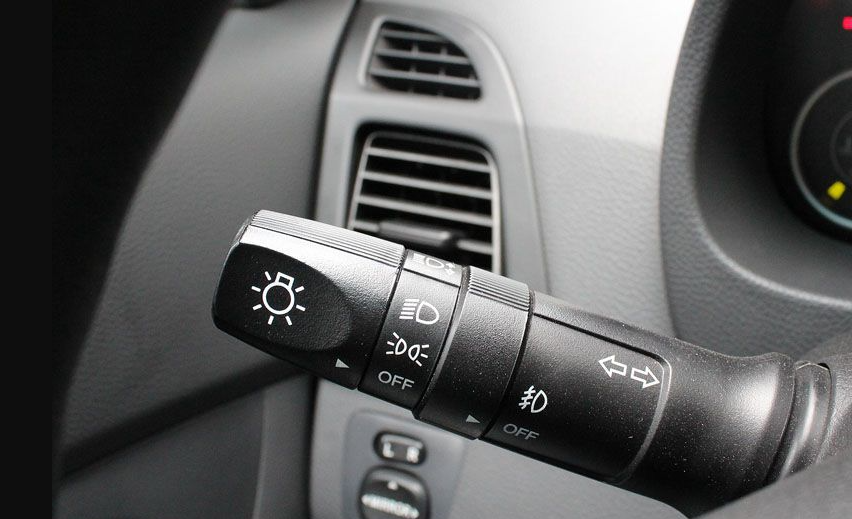A turn signal switch is an essential safety feature for every vehicle. It helps the motorist to communicate his or her intentions to other drivers when turning or changing lanes. Turn signal switches may break or degrade over time. As a result, the turn signal operates infrequently or not at all. What are the symptoms of a bad turn signal switch?
Some common symptoms of a bad turn signal switch include turn signals that only work intermittently, flashing faster than normal, or not working at all from one side. When the switch malfunctions, the hazard lights may only illuminate one side. Additionally, you may notice that the turn signal lever or stalk is loose, does not stay in place, or creates noise when activated. The turn signals may occasionally work, but the accompanying clicking noise from the dash is not audible.

Contents
What Are The Symptoms Of A Bad Turn Signal Switch?
A few typical indications that automobile owners should be aware of may suggest the need to replace a turn signal switch.
Erratic Turn Signal Behavior
One of the most prevalent indicators of a broken turn signal switch is irregular operation of the turn signals. When enabled, this irregular behavior may present itself as flickering, fast flashing, or even complete failure to illuminate. Such irregularities can confuse other drivers. It could lead to perilous circumstances on the road.
Inability to Cancel Turn Signal
Another noticeable symptom is the failure of the turn signals to cancel automatically after completing a turn or lane change. When the switch fails to return to the off position, other drivers may misinterpret the driver’s intentions. It raises the likelihood of accidents.
Loss of Other Lighting Functions
A malfunctioning turn signal switch may also have an impact on the vehicle’s other illumination features. This can include caution or brake lights, which may stop working entirely or exhibit unusual behavior. The loss of these vital safety features can dramatically reduce the vehicle’s visibility to other road users, especially in low-light conditions or inclement weather.
Audible Clicking Noises
Audible cues may potentially suggest a problem with the turn signal switch. When the turn signal is enabled, many automobiles make a distinctive clicking noise. Any departure from the standard clicking pattern, or the absence of this sound altogether, can indicate a problem.
Intermittent Operation
Intermittent activation of the turn signals is another indication of a faulty turn signal switch. The turn signals are inconsistent, functioning properly one moment and failing the next. It’s an obvious indication of a problem with the switch.
Indicator Lights Stay On
Furthermore, indication lights on the dashboard that remain glowing after the car has been switched off may indicate that the turn signal switch has failed to correctly return to the off position.
How To Fix A Bad Turn Signal Switch?

You must first diagnose the problem, followed by fixing or replacing the defective component. Here’s a step-by-step way to solving this problem:
Diagnosis
- Establish that the problem is with the turn signal switch. Check the fuse for the turn signals to ensure it is not blown.
- Check the turn signal bulbs to ensure they are not burnt out or malfunctioning.
- Inspect the wiring harness that connects to the turn signal switch for evidence of damage or corrosion.
- If other illumination functions, such as brake lights or warning lights, are compromised, determine whether the problem extends beyond the turn signal switch.
Repair or Replacement
- If the problem is limited to the turn signal switch, you could try fixing it if it’s possible. This could entail tightening loose connections or cleaning the contacts.
- Replace the turn signal switch if repair is not a possibility or does not address the problem. Auto parts stores and online merchants usually offer replacement switches.
Accessing the Turn Signal Switch
- Removing dashboard panels or the steering column cover may be necessary in order to reach the turn signal switch.
- To learn how to access and replace the turn signal switch, consult the vehicle’s service manual.
Replacing the Turn Signal Switch
- To avoid electrical shock, disconnect the car’s battery.
- Disconnect any electrical connectors that are connected to the turn signal switch assembly after locating it.
- Remove the outdated turn signal switch by unscrewing or unclipping it from its mounting location.
- After making sure that all connections are tight and the switch is positioned correctly, install the replacement turn signal switch in the opposite sequence.
- To ensure that the turn signals are operating properly, reconnect the vehicle’s battery and test them.
Final Checks
- Test each turn signal operation after the turn signal switch has been replaced. They are automatic canceling, hazard lights, and left and right signals.
- Verify that the dashboard’s indicator lights function as they should and that there are no odd sounds or problems while it’s operating.
Read More: Is It Safe To Drive With Emissions Light On?
Why Is My Turn Signal Blinking Really Fast?
When your turn signal blinks excessively quickly, there’s probably an electrical system issue at hand. The most frequent reason for fast blinking is a turn signal circuit burnt-out bulb.
Load Resistor Function
When a turn signal bulb burns out, the resistance in the circuit drops. The vehicle’s flasher relay, which regulates the blinking rate, detects the change in resistance and increases the blinking rate to warn the driver of the problem.
Fast Blinking as a Warning
Rapid blinking serves as a visual warning to the motorist that one of the turn signal bulbs is malfunctioning. Its purpose is to remind the driver to inspect the external lights and replace any burned-out bulbs as soon as possible.